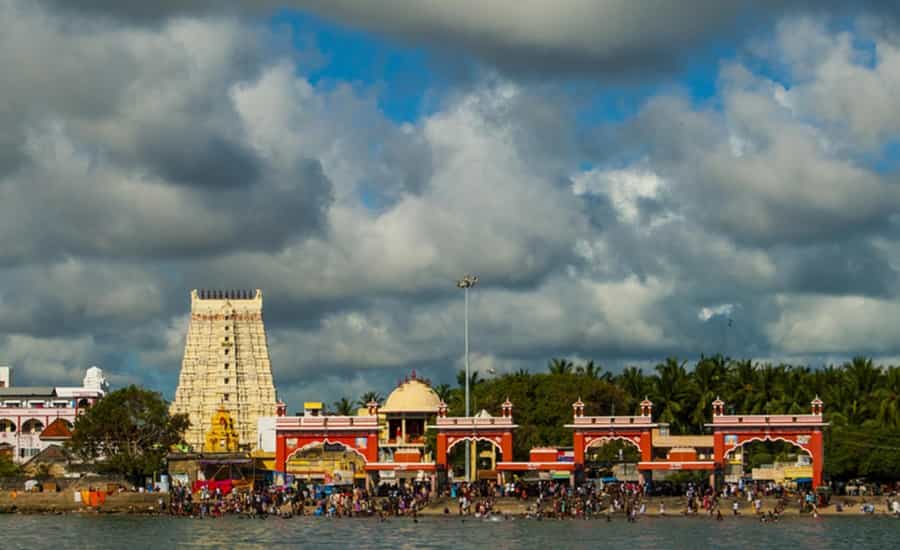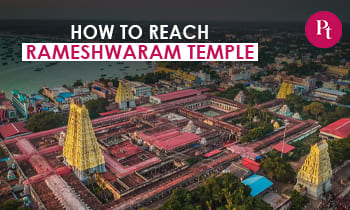Rameshwaram Temple, one of the holiest shrines in India, holds immense significance in Hindu mythology. Located on Rameswaram Island in Tamil Nadu, this sacred temple is dedicated to Lord Shiva and is a popular pilgrimage destination for devotees from all over the world. When planning a visit to this divine place, it’s crucial to consider the best time to ensure a comfortable and spiritually enriching experience. The weather, temperature, and seasons play a pivotal role in determining the ideal time to visit Rameshwaram Temple. In this comprehensive guide, we will explore the climatic conditions throughout the year and help you make an informed decision about when to embark on your spiritual journey.

Summer Season (March to June)
Rameshwaram experiences a hot and humid climate during the summer months, which can be quite uncomfortable for many visitors. The temperature during this season can soar up to 40°C (104°F) and sometimes even higher. The scorching heat, along with high humidity, makes outdoor activities strenuous.
Weather Conditions
- Clear skies and abundant sunshine are common during the summer season.
- Occasional sea breezes offer some respite from the heat.
Visiting Rameshwaram Temple in Summer
- While the temple remains open throughout the year, it’s advisable to visit early in the morning or late in the evening to avoid the peak heat.
- Ensure that you stay well-hydrated and protect yourself from the sun by wearing sunscreen and lightweight clothing.
- This period is not the most popular time for pilgrims due to the harsh weather conditions.
Monsoon Season (July to September)
The monsoon season in Rameshwaram brings relief from the scorching summer heat. During this time, the region receives moderate to heavy rainfall, which can sometimes lead to flooding. While the temperature remains relatively lower, the excessive humidity can still be a challenge.
Weather Conditions
- Frequent rain showers and occasional thunderstorms are common.
- Humidity levels can be high, making it feel warmer than it is.
Visiting Rameshwaram Temple in Monsoon
- The temple is open during the monsoon, but the weather can be unpredictable.
- Be prepared for rain and carry appropriate rain gear, such as umbrellas and raincoats.
- Pilgrimage during this season can be a unique experience as the island appears lush and green.
Post-Monsoon Season (October to December)
The post-monsoon season in Rameshwaram is a popular time to visit the temple. The weather becomes more pleasant as the monsoon recedes, and the island starts to dry up. This period is characterized by moderate temperatures and lower humidity levels.
Weather Conditions
- The temperature ranges from 25°C to 30°C (77°F to 86°F), making it comfortable for outdoor activities.
- Humidity decreases, resulting in more enjoyable weather conditions.
Visiting Rameshwaram Temple in Post-Monsoon
- This is considered the best time to visit Rameshwaram Temple due to the favorable weather conditions.
- The island’s natural beauty is at its peak during this season, with lush greenery and blooming flowers.
- Pilgrims can comfortably explore the temple and its surroundings.
Winter Season (January to February)
The winter season in Rameshwaram is marked by pleasant weather with cool temperatures. It’s another ideal time for pilgrims to visit the temple and enjoy the serene surroundings.
Weather Conditions
- The temperature ranges from 20°C to 25°C (68°F to 77°F), creating a cool and comfortable atmosphere.
- Clear skies and mild winds prevail during the winter season.
Visiting Rameshwaram Temple in Winter
- This season is suitable for exploring the temple and taking part in religious rituals.
- It’s a popular time for tourists, so accommodation and travel arrangements should be made in advance.
- The pleasant weather allows for longer walks on the island’s beaches and exploration of nearby attractions.
Festivals and Special Occasions
Rameshwaram Temple hosts several festivals and special occasions throughout the year, which can be a significant factor in determining the best time to visit. Some of the prominent festivals celebrated at the temple include Maha Shivaratri, Navratri, and Arudra Darshanam. These festivals draw large crowds and create a vibrant atmosphere in and around the temple. If you want to witness the grandeur and spiritual fervor of these events, plan your visit accordingly.
Conclusion
In conclusion, the best time to visit Rameshwaram Temple depends on your preferences and tolerance for weather conditions. The post-monsoon season (October to December) and winter season (January to February) are generally considered the most favorable due to their pleasant weather. However, if you are interested in experiencing unique monsoon scenery or participating in specific festivals, other times of the year may be more suitable. Regardless of the season, a pilgrimage to Rameshwaram Temple promises a spiritually enriching experience, and with proper planning, you can make the most of your visit to this sacred destination.










 Call
Call WhatsApp
WhatsApp Enquiry
Enquiry
Have any festivals in February first weekl